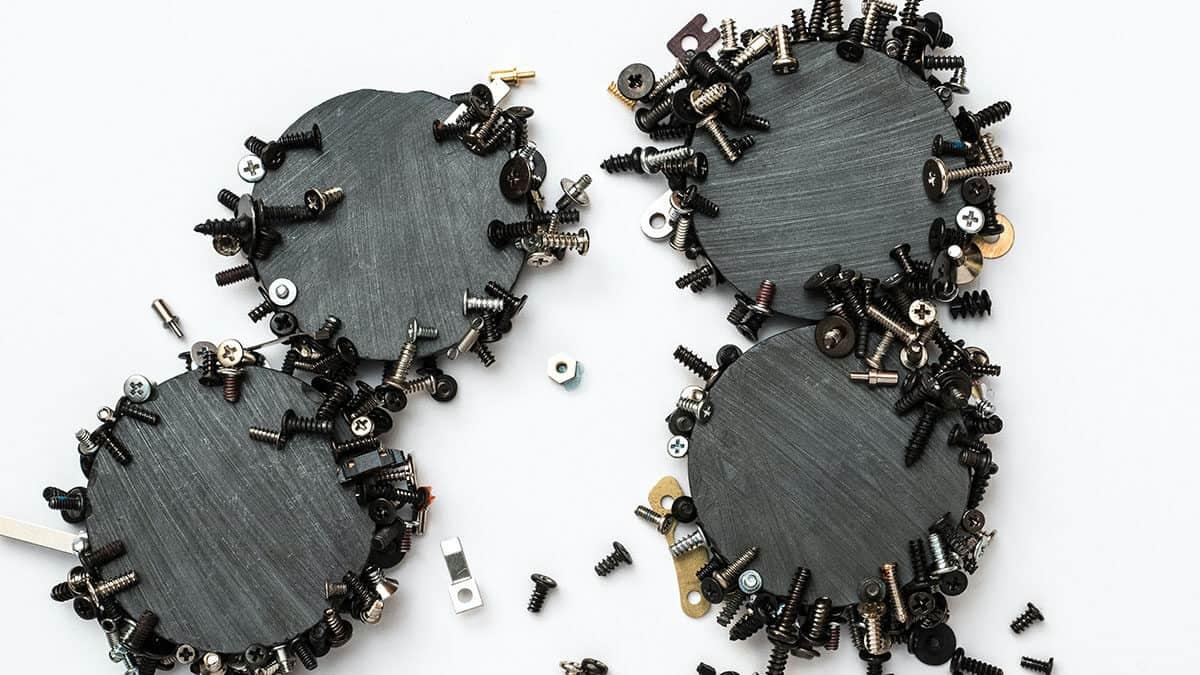Whilst magnetism may not be a fundamental force, its not useless. Magnetism is an integral part of Earth.
Rules of attraction
Magnetism is a force created by electricity, or more specifically by electrons. In any iron atom, there are 26 electrons. Each electron has a tiny bit of negative charge.
The way these electrons behave is impossible for us to imagine, because it’s not like anything we can see. But we can understand it by thinking about it like this:
Imagine an iron atom as being like the teacup ride at the carnival. The electrons all go around the nucleus, like the teacups go around the middle of the ride.
At the same time, each electron spins around, like the teacups spin around when you turn the wheel. The electrons, like the teacups, have momentum that makes them spin either clockwise or counter-clockwise.
In most objects, some electrons spin one way and some spin the other way, and they cancel each other out, so most objects are not magnetic.
In a chunk of iron, also, some electrons spin one way, and some spin the other way, and most of them cancel each other out. But in iron, there are some extra electrons that can go either way.
When you run a magnet over a chunk of iron, those extra electrons all start spinning the way the magnet pulls them, and the chunk of iron becomes a magnet itself.
So what’s magnetic?
Many objects in space are magnetic. The Sun, for instance, is very magnetic, because there are places on the Sun where there are a lot of extra electrons or protons.
The whole Earth is also highly magnetic, although Mars and Venus are much less so. The Earth’s magnetism pulls negatively charged things like electrons toward the North Pole and positively charged things like protons toward the South Pole. Liquid iron inside the Earth creates (and sometimes changes) the Earth’s magnetism.
Until about two hundred years ago, people made magnets by rubbing iron on lodestones. The rubbing lined up the electrons of the iron so that all the electrons would pull in the same direction. But today we can use electricity to make magnets.
Fun Facts
- Magnets can make some other metals into magnets when they are rubbed together
- An electromagnet is very handy because it can be turned on and off easily (using an electric current), whereas a permanent magnet cannot be turned off – you get electromagnets in some burglar alarms.
- Metals that have iron and steel attract magnets well. Metals like brass, copper, zinc and aluminium are not attracted to magnets.
Fun Experiments
Hanging Pennies
What we’re going to need is:
- A Magnet
- Lots of pennies – about 10 would be perfect.
OK, here we go.
- Hold the magnet up against the coins and see if they attract. Not all pennies are magnetic – those older than 1992 won’t be, so you might need to try a few
- Once you have one penny attached to your magnet try attaching another penny to the first one. If that sticks try attaching another one!
Shunting Trains
What we’re going to need:
- Two “brio” style trains or trains with magnets
- Some track
Here we go.
- Normally you would make sure the magnets were sticking together but for this experiment turn one so that the magnets are pushing away from each other.
- Put both trains on the track about 3 cms apart and push the first towards the second.
- The second train will begin to move without you touching it, pushed by the magnetic force. Not only do magnets stick, they also repel, or push. This is due to their opposite ends, or North and South Poles.




